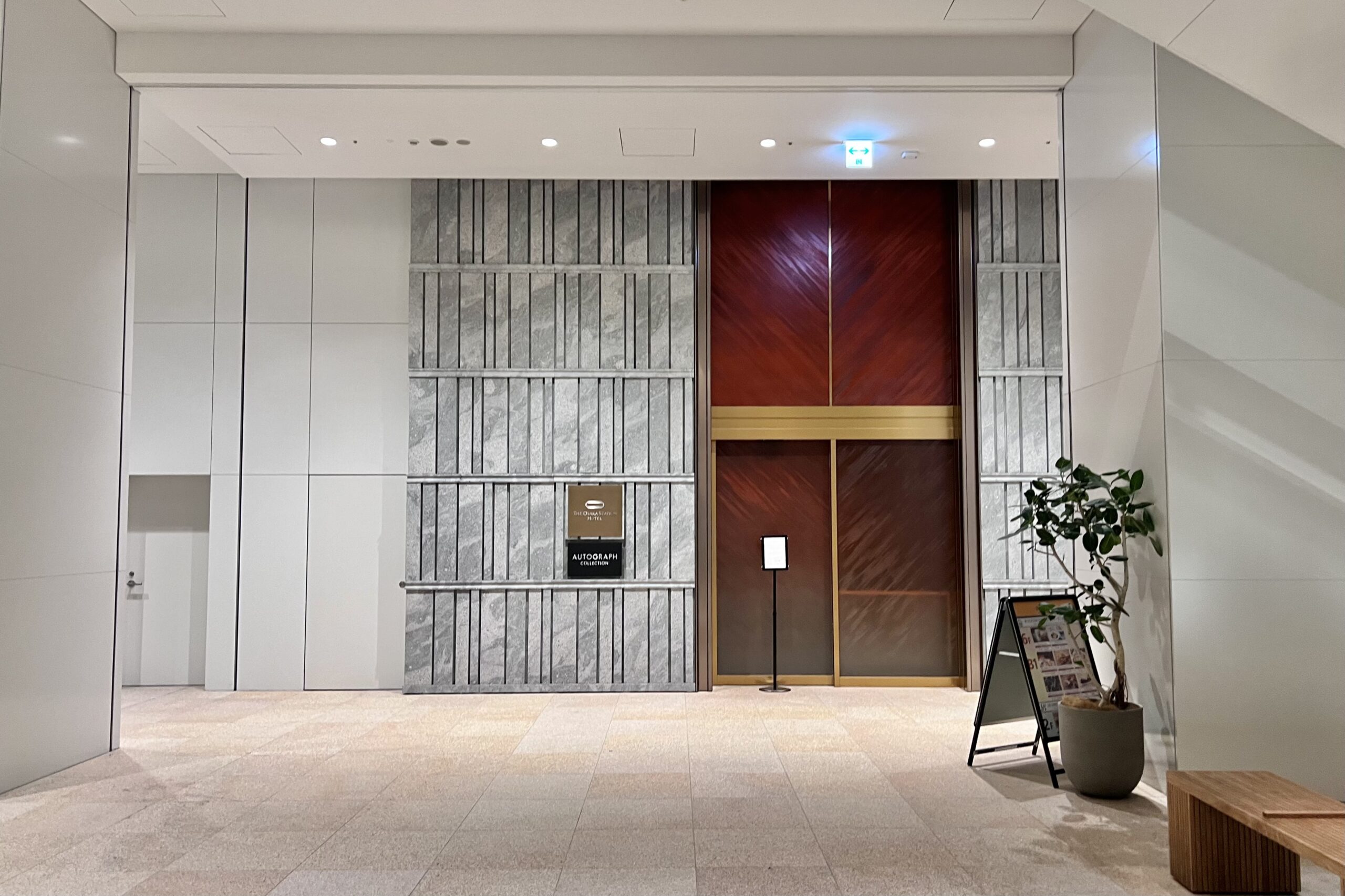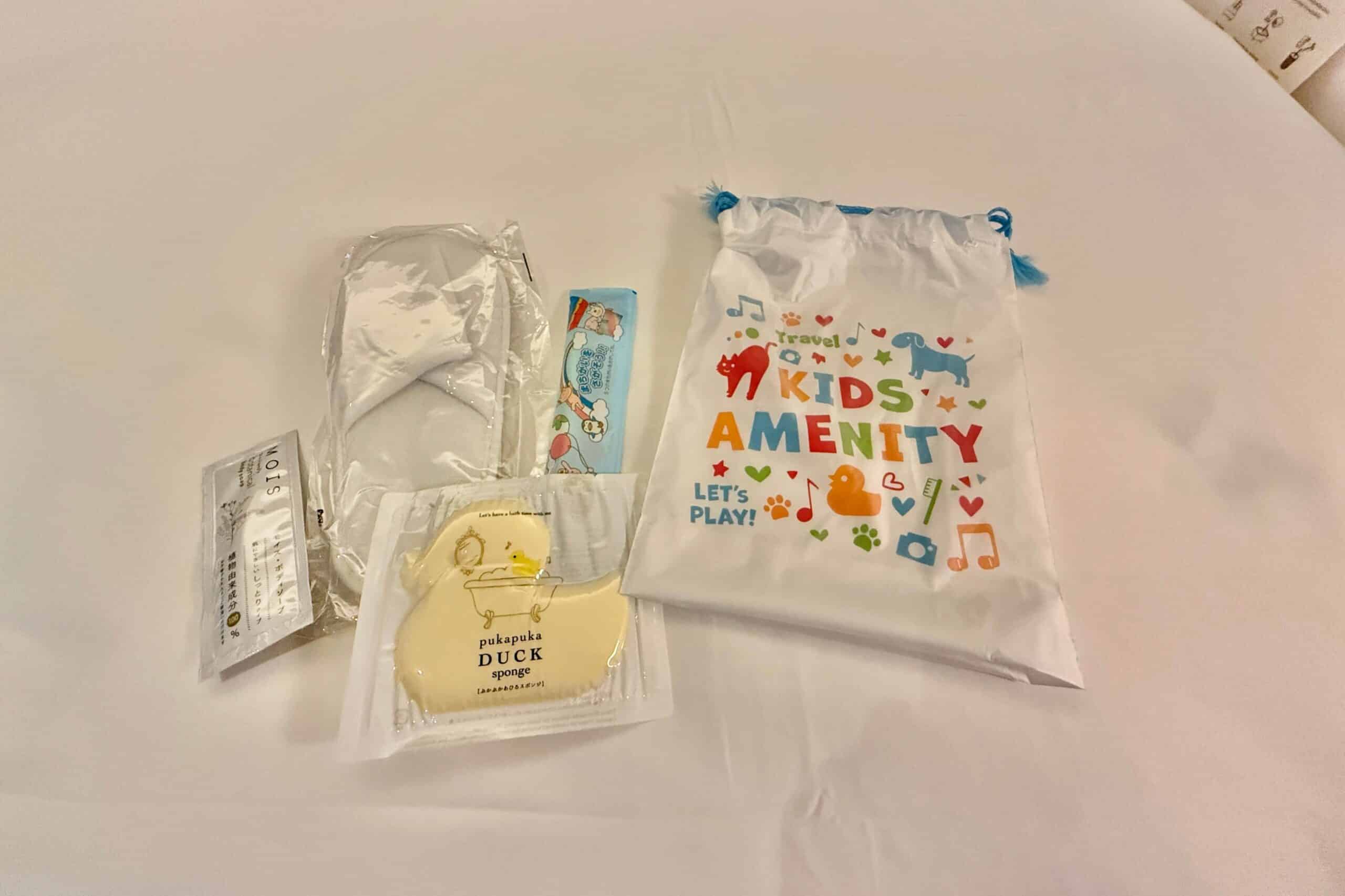What we loved: The hotel’s prime location adjacent to Osaka Station makes it incredibly convenient for exploring Osaka and taking day trips to nearby cities like Kyoto, Nara, and Kobe. Their breakfast buffet offers an exceptional spread, complete with delicious Hokkaido soft-serve ice cream that became a highlight of our mornings. The onsite bathhouse (onsen) provides a perfect way to relax after a day of sightseeing.
What we didn’t love: Families with older or bigger children might find the two double beds on the small side, though this is standard for Japanese accommodations. The open washroom concept may also challenge those who prefer more privacy. While the bathhouse is an impressive amenity, access is limited, and some Platinum and Titanium guests may be surprised to learn they do not have entry to the The Specialty Salon.
How to book: This hotel participates in the Marriott Bonvoy program and typically requires 45,000–74,000 points per night, making it a potential sweet spot for using a Free Night Award worth 35,000 points with a top-up. Cash rates often exceed ¥50,000 per night plus taxes and fees.
If you’re booking a cash rate, be sure to get in touch with our travel agency, Prince Collection, for a quote. This property participates in Marriott Luminous, and we’re able to offer additional perks such as complimentary breakfast, a $100 USD resort credit, and more, all at no additional cost to you.
The Osaka Station Hotel, Autograph Collection – About The Property
The Osaka Station Hotel, Autograph Collection opened in July 2024 as a modern luxury accommodation that pays homage to its historic location. The hotel occupies floors 30 through 38 of the JP Tower, offering guests breathtaking panoramic views of Osaka from its 418 well-appointed rooms.
The property stands on the site of the original Osaka Station, which first opened in 1874, and thoughtfully incorporates design elements that celebrate this rich heritage. Throughout the hotel, you’ll find artistic nods to its railway past, with brass, wood, and brick accents reminiscent of the historic station.

The room offerings include king rooms, double rooms, larger corner rooms (approximately 1.5 times the size of standard rooms), and spacious suites. These accommodations are further categorized as Signature, Scenic, or Specialty based on their floor level.
Location
The Osaka Station Hotel boasts an unbeatable location directly adjacent to Osaka Station. To reach the hotel from the station, simply exit through the West Gate and walk directly across to the JP Tower.
Below the hotel is KITTE Osaka retail complex which provides numerous shopping and dining options without needing to step outside. The surrounding Umeda district is one of Osaka’s major commercial centres, with department stores, restaurants, and entertainment venues all within walking distance.
Osaka Station is a major hub for multiple subway and train lines, so you can easily access all of Osaka’s attractions. You can reach EXPO 2025 in 25 minutes, Universal Studios Japan in 12 minutes, Dotonbori in 20 minutes, and Osaka Castle in 35 minutes. For day trips, Himeji Castle is about 65 minutes away, Kyoto is 30 minutes, and Nara is around 50 minutes.
Tokyo is approximately 2.5 hours away via the Shinkansen bullet train. For those travelling by air, Itami Airport (ITM) is about 40 minutes by subway, while Kansai International Airport (KIX) is about 60 minutes on the Kansai Airport Limousine Bus (one-way tickets cost ¥1,800).
Uber is available and can offer a faster way to reach certain destinations compared to public transportation. If you’re renting a car, self-parking is available for ¥4,000 per day, with valet service offered at ¥8,000.
Booking
My family stayed at this property for 3 nights during March Break, as a stopover before our trip to Korea. For our stay, I redeemed 46,000 Bonvoy points per night, supplementing with two Free Night Awards from our Marriott Bonvoy® American Express®* Card and Marriott Bonvoy® Business American Express®* Card. This represented excellent value considering the cash rates were exceeding ¥50,000 per night plus taxes and fees during our visit.
Award availability for this property tends to be quite good, though point requirements can fluctuate significantly so it’s worth checking regularly for price drops. We attempted to apply Nightly Upgrade Awards for a larger corner room but unfortunately, these didn’t clear before our arrival.


At Prince of Travel, we generally value Marriott Bonvoy points at 0.8 cents per point (CAD) or 0.6 cents per point (USD), so this would be a good value for your points given the cash rate.
The Osaka Station Hotel, Autograph Collection participates in Marriott Luminous, a preferred partner program that you can access through our in-house travel agency, Prince Collection.
By booking through us, you’ll pay the best available rate (and sometimes even less), and have access to exclusive benefits, such as a $100 (USD) property credit, complimentary breakfast for two, one-category room upgrade, early check-in, late check-out (subject to availability), plus a welcome gift and letter.
Book Luxury Hotels with Prince Collection
The Osaka Station Hotel, Autograph Collection – Check-In Experience
The hotel features two entrances: a main street entrance primarily used by guests arriving by car, and a more discreet entrance from within the JP Tower.


Having arrived via the Kansai Airport Limousine Bus at Osaka Station, we accessed the hotel through the tower entrance.


After a short walk through the JP Tower’s ground floor, we located the sliding doors leading to the hotel. The entrance consists of a somewhat dimly lit hallway that eventually opens to the elevator bank that takes guests up to the main lobby.
The moment you step into the lobby, you’re immediately transported to a sophisticated reimagining of Osaka’s railway heritage. The striking red brick walls that line the space echo the historic façade of the original 1874 Osaka Station that once stood on this very site.
On one side is a clock tower art installation commemorates the original station clock tower.


The central water station echos the traditional water stops at Japanese train stations.


The centerpiece reception desk features a circular marble counter reminiscent of a classic ticket office, anchoring the space with refined elegance. Striped flooring subtly guides visitors like railway tracks past brick columns toward check in, while comfortable seating areas evoke the waiting lounges of grand terminals.

We were immediately greeted by staff members who graciously took charge of our luggage while we proceeded to the reception desk. The check-in process was efficient and conducted with the exceptional courtesy characteristic of Japanese hospitality–staff members were consistently smiling, bowing, and displaying impeccable manners.
As a Titanium Elite member, we received a warm recognition of status and were presented with following elite perks:
- Upgrade: We booked a Signature Twin Guest Room and were upgraded to the Scenic Twin Guest Room, which is located on a higher floor.
- Welcome amenity: We were given a choice of 1,000 points or a small container of local candies.
- Late check-out: We were offered a late check-out for our last day, which we declined as we would be leaving early.
- Breakfast: Complimentary breakfast buffet for up to 2 adult and 2 kids aged 12 and under was included.
The Osaka Station Hotel, Autograph Collection – Scenic Twin Guest Room with Two Double Beds
Our Scenic Twin Guest Room perfectly embodied the hotel’s aesthetic of Japanese minimalism blended with contemporary luxury. The room featured two comfortable American-sized double beds (even though they refer to them as twin beds in Japan) with white linens against a backdrop of neutral tones of white, beige, and gray, with warm, light wooden elements, creating a calming atmosphere.


Beside the bed you’ll find a an open-style wardrobe holding robes, slippers, pyjamas, and a steamer for use during your stay.


The living space was thoughtfully arranged with a small round table and comfortable seating, a wall-mounted TV, and built-in wall unit. In the wall unit was a small mini-bar fridge. A particularly nice touch was the complimentary free drinks (though replenishment incurred charges).


A box of pastries from the bakery located in the same building was thoughtfully arranged on the table as a welcome gift, along with a tea set with dashi tea, rice crackers, and candy that was replenished daily.
Floor-to-ceiling windows offered spectacular city views, particularly dramatic at night when Osaka’s lights began to twinkle below.
The bathroom featured an open-concept design that seamlessly blended with the bedroom’s elegant aesthetic. It included a glass-enclosed shower and bathtub combination, sleek gray tiles, and premium amenities displayed on a striking marble countertop. A separate water closet added a practical touch, offering enhanced privacy.
For families traveling with children, the hotel provided a special amenity kit with child-sized slippers, a duck-shaped sponge, and toiletries.


Each floor also featured convenient water stations near the elevators where guests can refill their water bottles.
The Osaka Station Hotel, Autograph Collection – Food and Drink
The hotel offers several distinctive dining options, each with its own unique concept and atmosphere:
The Moment serves as the property’s all-day dining restaurant, designed to evoke the experience of dining in a luxury train car. This is where the impressive breakfast buffet is served, featuring an extensive selection of both Japanese and Western options, including sushi and a beef carving station.
The highlight for my family was the Hokkaido milk soft-serve ice cream station–an unexpectedly rich and delightful breakfast option that became a daily treat.


The Lobby Lounge provides a bright, airy space illuminated by a skylight gable roof that references the architecture of the historic Osaka Station. This venue is perfect for light bites or evening drinks in an open and casual setting.


Mizuki, named after a JR luxury train, offers an upscale teppanyaki dining experience accompanied by stunning skyline views. This restaurant represents the property’s fine dining option for guests seeking a special culinary experience.
Located on the 38th floor, the Specialty Salon is an exclusive lounge reserved for guests staying in Specialty rooms on the 38th floor, suites, or those with Ambassador Elite status.


In addition to the spectacular view, this refined space offers a curated breakfast, light lunch, and evening hors d’oeuvres, along with complimentary alcoholic and non-alcoholic beverages served throughout the day.
Room service is available for those preferring to dine in their rooms. Additionally, the KITTE Osaka retail complex located below the hotel houses numerous restaurants and casual dining options, many open until late evening.
The Osaka Station Hotel, Autograph Collection – Other Facilities
The 24-hour fitness centre is well-equipped with exercise machines and free weights, allowing guests to maintain their fitness routines regardless of their schedule.


Perhaps the most distinctive facility is Ofuro, the hotel’s onsite Japanese bathhouse. This traditional amenity is reserved for guests staying in Specialty rooms, suites, or those with Titanium or Ambassador Elite status. The Ofuro follows traditional Japanese bathing customs with gender-separated facilities where mobile devices are not permitted.


Children aged 12 and under may use the facility before 5pm. Outside the bathing area, a comfortable lounge is available where guests of all genders can relax and enjoy complimentary non-alcoholic beverages and coffee.


While the hotel doesn’t offer specific children’s facilities like a kids’ club, it remains a welcoming space for families. The child amenity kits, family-friendly breakfast options, and convenient location make it suitable for travellers with children.
Conclusion
The Osaka Station Hotel, Autograph Collection, represents an excellent addition to Marriott’s portfolio in Japan, especially given its prime location directly adjacent to Osaka Station.
The property successfully balances modern luxury with thoughtful references to its railway heritage, creating a distinctive sense of place. It is perfect for guests who value convenience, comfort, and authentic Japanese hospitality.
Marriott Bonvoy members will appreciate the consistent elite recognition and valuable benefits, and find this property often represents good value for award redemptions, especially when cash rates are high.
Whether for business or exploring the cultural riches of Osaka and beyond, this property warrants serious consideration for your next visit to Japan.
This story originally appeared on princeoftravel





















